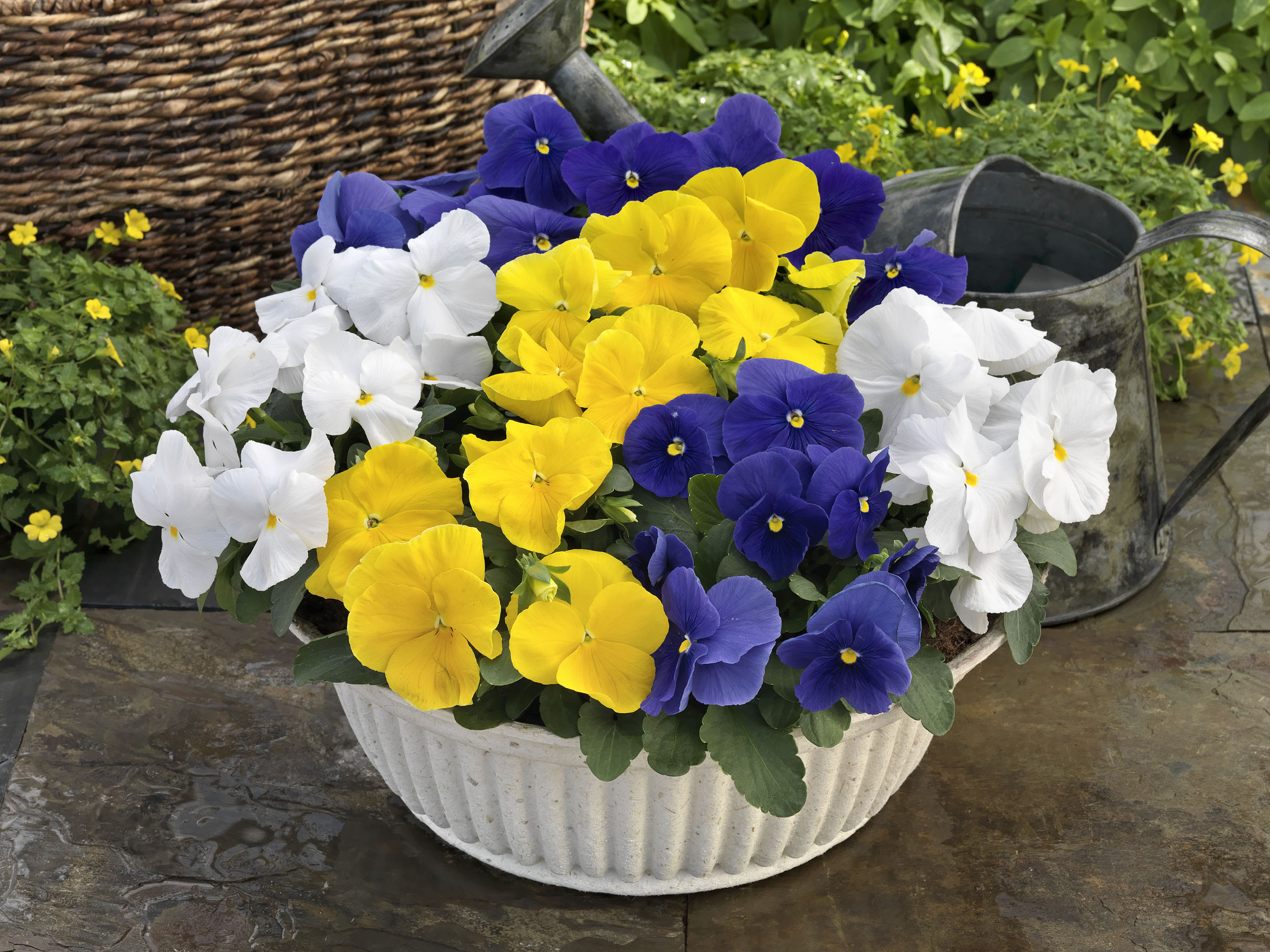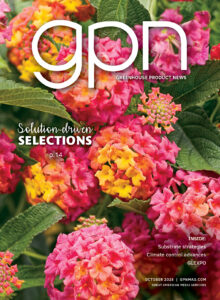
Crop Culture Report: Pansy Grandio series
The pansy Grandio series is the newest addition to a well-established and highly beneficial pansy breeding program from Sakata Ornamentals. Known for the extra-large flowered series Majestic Giants, Sakata’s large-flowered Grandio series features many of the same highly regarded attributes, such as large, vibrant flowers sitting on short peduncles. These attributes greatly reduce the amount of stretch under warmer growing conditions. Grandio is offered in 11 colors, including a brilliant clear golden, which is very popular for the landscape. The series consists of six clear colors: golden, orange, purple, rose, white and true blue, and five blotch colors: white with blotch, white with rose blotch, yellow with blotch, deep blue with blotch and Sakata’s newest introduction Masquerade, a tri-color with shades of purple, rose and cream.
Plug Production
Pansy Grandio seed can be sown in 512- and 288-plug trays for pack or pot production, as well as in larger-sized plug trays for larger containers and hanging baskets. Ensure the pH of the media is in the 5.5 to 5.8 range and the soil EC is less than 0.75. Soil temperatures should be 64 to 68° F, with a light vermiculite covering, if desired. After germination and the cotyledons have expanded, lightly fertilize with 75-ppm nitrogen from a well-balanced fertilizer. To avoid boron deficiency, target boron at 0.25 ppm in the fertilizer. If needed, supplement with Solubor or Borax. Maintain temperatures as cool as possible with good air flow. Supply up to 3,000 foot-candles/32,000 lux of light. After the initial feed, begin fertilizing with 100- to 200-ppm nitrogen from a well-balanced fertilizer containing trace elements. A calcium nitrate-based fertilizer works well to build strong compact plants.
Reduce fertilizer as plants begin to fill trays. When applying fresh water (no fertilizer), continue to apply trace elements, especially boron, and keep water alkalinity at 60 to 80 bicarbonate to maintain soil pH between 5.5 and 5.8. Ideally, give pansy plug flats higher light levels to control stretch. As plugs continue to grow, reduce temperatures and provide optimal air movement. Maintain light levels up to 7,000 foot-candles/75,000 lux, but avoid heat and water stress. If plant height control is needed, B-Nine (daminozide), Cycocel (chlormequat) and A-Rest (ancymidol) are effective. Begin spraying when the leaves are the size of a dime. Optimum EC is 1.0 to 1.2 (2:1 slurry). Depending on the plug size and the time of year, plug grow-time is usually between four and six weeks.
Transplant to Finish
Transplant plugs into a well-aerated soil mix with a pH between 5.5 and 5.8, while avoiding planting the plugs too deep to prevent stem rot. The optimum day temperature is 62 to 68° F with nights at 50 to 55° F.
Fertilize with 100- to 200-ppm nitrogen from a well-balanced fertilizer to ensure a healthy start. Pansies are sensitive to boron deficiency characterized by deep green foliage, crinkled foliage and tip abortion. It is recommended to supply 0.25 ppm of boron at each watering. Be sure to check the boron level in your water supply to avoid oversupplying this microelement. While providing optimum temperatures, high light, good ventilation and low ammonium will promote compact plants, PGR applications may be needed to control excessive growth. B-Nine, Bonzi, Cycocel and A-Rest can be utilized to keep plants toned and compact. Avoid spraying too early before the plants are filled in as Grandio sets buds early, especially during periods of high light, long days and warm temperatures. As always, follow PGR label directions.
Major pests include fungus gnat, shore fly, thrip, caterpillar, cut worm, cabbage looper, slug and spider mite.
Major root diseases include Pythium, Phytopthora and Thielaviopsis. Thielaviopsis or Black Root Rot is often a problem early in the season when temperatures are high. Research has shown that the disease is checked at a pH of 5.5 or lower. Avoid high ammonium levels, as this can encourage the onset and spread of the disease. Good sanitation and moisture management works well to prevent most of these diseases.









 Video Library
Video Library 


















